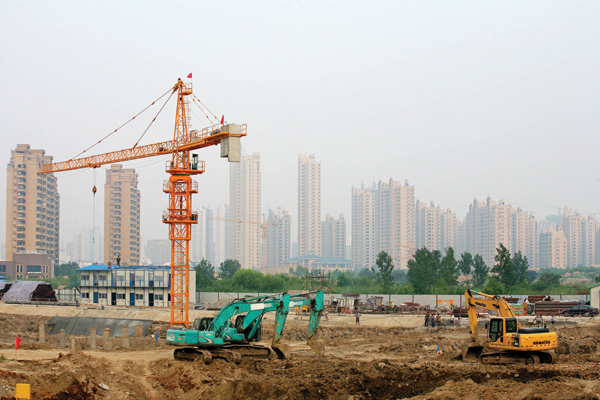

|
 So many urban complexes have sprung up across the country, the property market in the second and third-tier cities is at saturation point, experts said. Provided to China Daily |
Industry insider points to a problem that is bubbling under the surface
As warnings continue to be sounded about the bubble in China's housing market, real estate industry insiders are warning of another, but one that few people are aware of.
That bubble has formed in the market for urban complexes in second and third- tier cities. Urban complexes are modern developments covering large areas that usually bring together residential blocks, offices, shopping malls and entertainment facilities such as cinemas and clubs.
George Yeung, managing director in North China for Colliers International, said so many urban complexes have sprung up across the country that the market is almost at saturation point. Colliers International, based in Seattle, is one of the four biggest commercial property service companies in the world.
"If bubbles in residential properties burst, people can still sell them if the sticker price is low enough, because people always need a place to live," Yeung said. "But once the commercial property market crashes, nobody is willing to rent a shop that loses money every day, when there is no customer but accumulating rental and utility fees."
A report issued at a Chinese commercial real estate conference in Beijing this month suggested that the commercial property market in some second and third-tier cities has already shown signs of overheating. In the first half of the year, 4,496 plots of land for commercial purpose were sold, 53 percent more than in the corresponding period last year, it said.
Urban complexes account for a significant proportion of those sales. In Hohhot, in the Inner Mongolia autonomous region, more than 30 urban complexes are being built for an area whose population is only 3 million. The problems that those numbers present become clearer when you consider a rule of thumb in the industry: an urban complex can have a direct influence on about 300,000 residents, which means three or four complexes would be enough for a city with a population of 1 million.
 Models at Ford pavilion at Chengdu Motor Show
Models at Ford pavilion at Chengdu Motor Show
 Brilliant future expected for Chinese cinema: interview
Brilliant future expected for Chinese cinema: interview
 Chang'an launches Eado XT at Chengdu Motor Show
Chang'an launches Eado XT at Chengdu Motor Show
 Hainan Airlines makes maiden flight to Chicago
Hainan Airlines makes maiden flight to Chicago
 Highlights of 2013 Chengdu Motor Show
Highlights of 2013 Chengdu Motor Show
 New Mercedes E-Class China debut at Chengdu Motor Show
New Mercedes E-Class China debut at Chengdu Motor Show
 'Jurassic Park 3D' remains atop Chinese box office
'Jurassic Park 3D' remains atop Chinese box office
 Beauty reveals secrets of fashion consultant
Beauty reveals secrets of fashion consultant